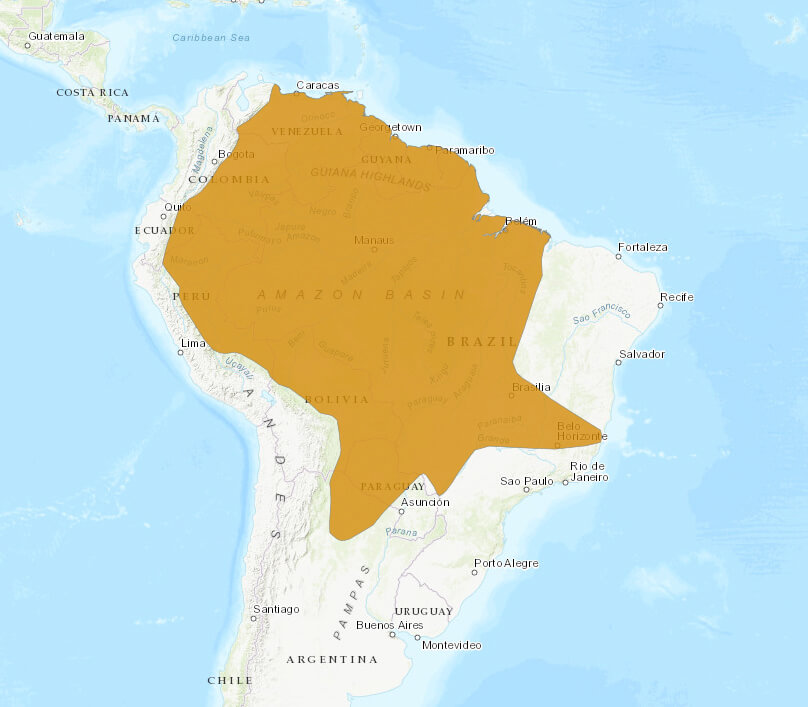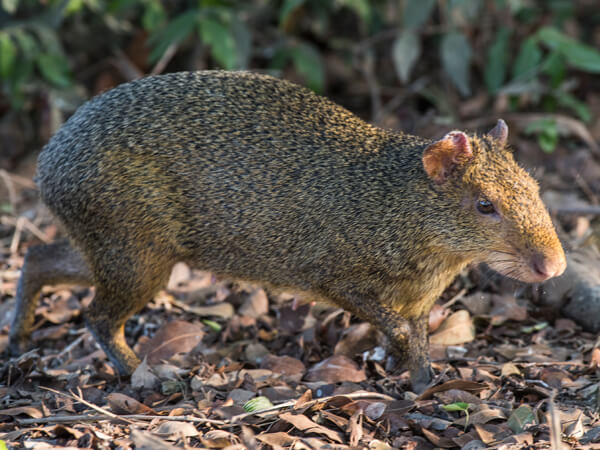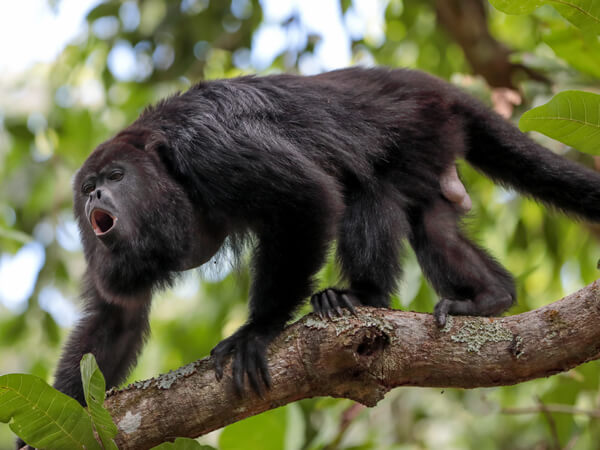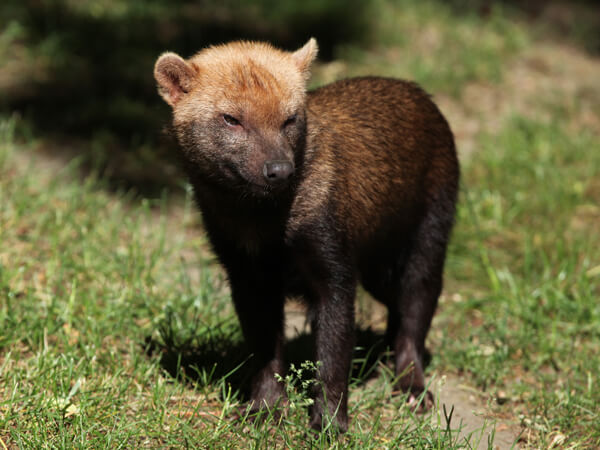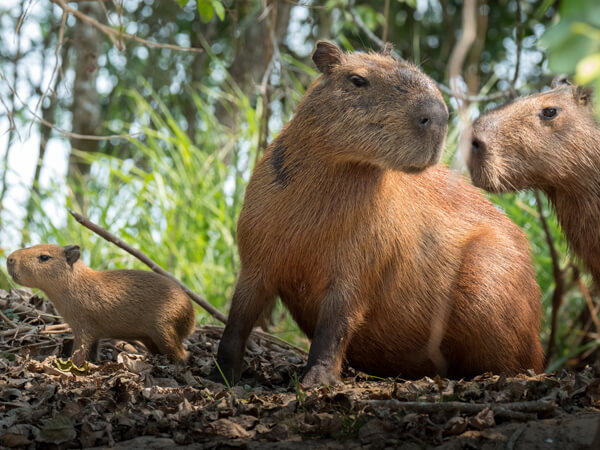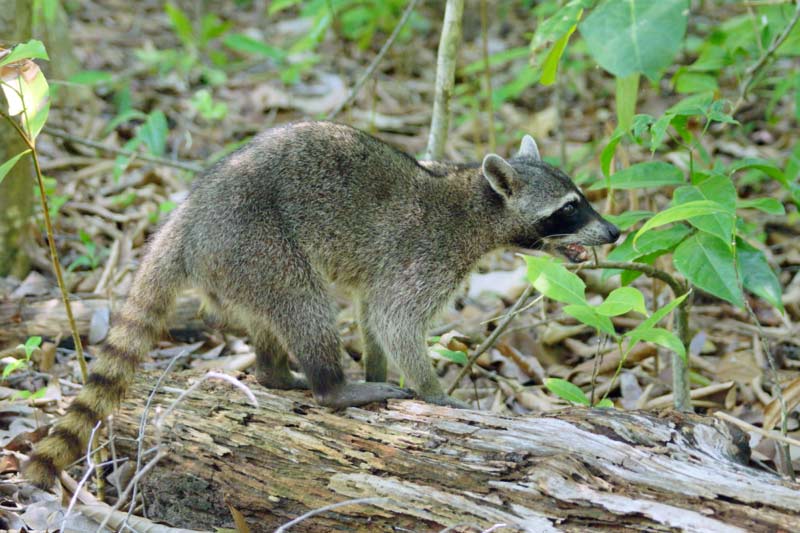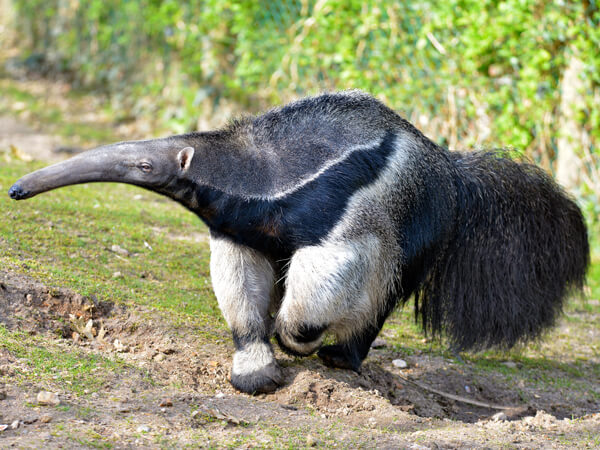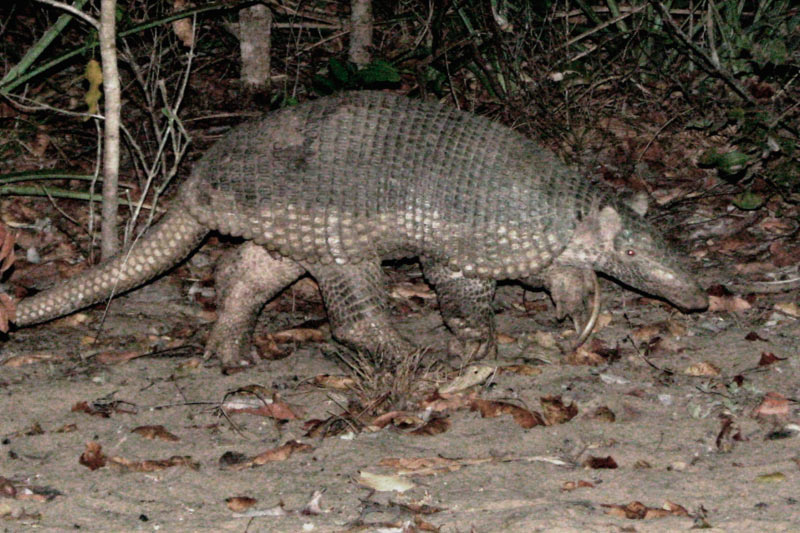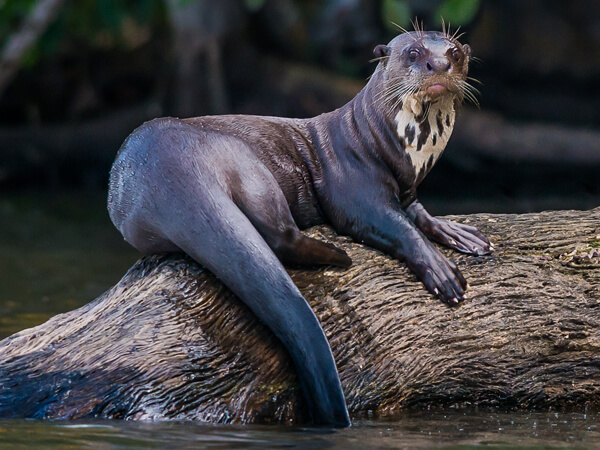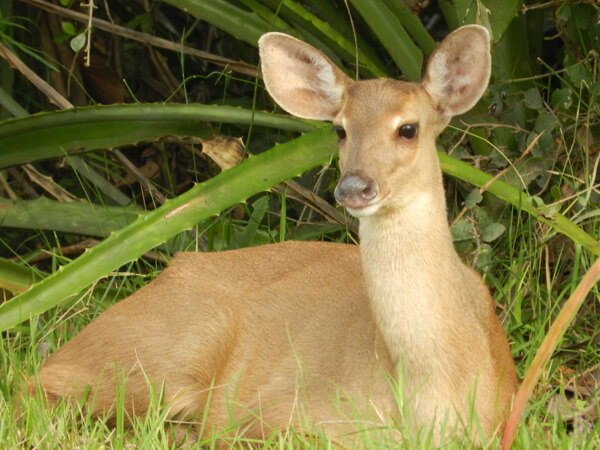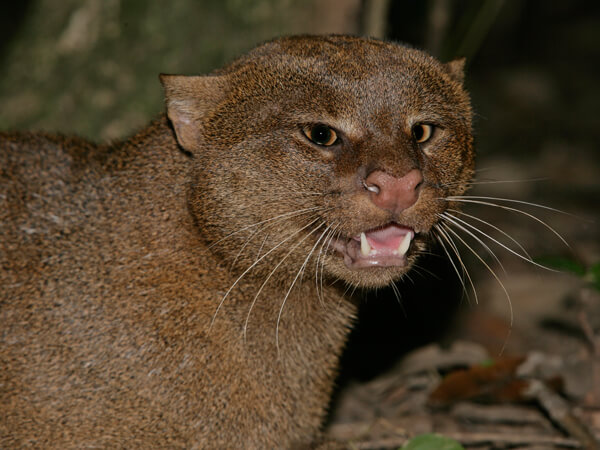The giant armadillo is the largest and most rare species of armadillos in the world. It digs huge holes with its large claws. These holes can be more than 40 centimeters wide and 30 centimeters high, either to make a burrow or to feed on insects such as termites and ants. They are not often studied in nature, so limited information exists about them.
Click to learn more
Distribution
Giant armadillos are present in a widely distributed area; their presence has been confirmed in much of the eastern portion of South America, from Venezuela and the Guianas to the north of Argentina. In Brazil, they are found mostly in the Amazon, Cerrado and the Pantanal, and may also appear in more central points of the Atlantic. Despite its widespread incidence, this animal has a low population density and is not often seen.
Features
Giant armadillos measure up to 1.5 meters (from nose to tail) and weigh 60 kilograms. A hard, durable shell covers much of the body, and they also have some fur on their bodies. Their front legs are equipped with large, powerful claws – with a central nail that can reach a length of 20 centimeters – used to help dig huge holes. They have no teeth, so their giant claws are their main defense. Giant armadillos are also called ecosystem engineers as they alter the landscape with these enormous holes, allowing other species such as bush dogs, ocelots, and anteaters, among others, to use the burrows after the giant armadillos have vacated them.
Behavior
The giant armadillo is a species seldom studied by science, so there is not much data available about the behavior of this species. Habits are generally nocturnal and semi-fossorial. Their powerful claws are used for digging holes and opening termite mounds. It is considered a solitary animal, except during the mating season.
Food
They are insectivorous animals, feeding mainly on termites and ants, but may also eat the larvae of other insects.
Reproduction
There is not much information on the reproductive biology of this animal.
Conservation
Giant armadillos have been considered “vulnerable” by the national lists of both the ICMBio and the IUCN. However, in some states, the species has been called “critically endangered”.
Threats
The main threats to the species are hunting, habitat loss, trampling and burning.

